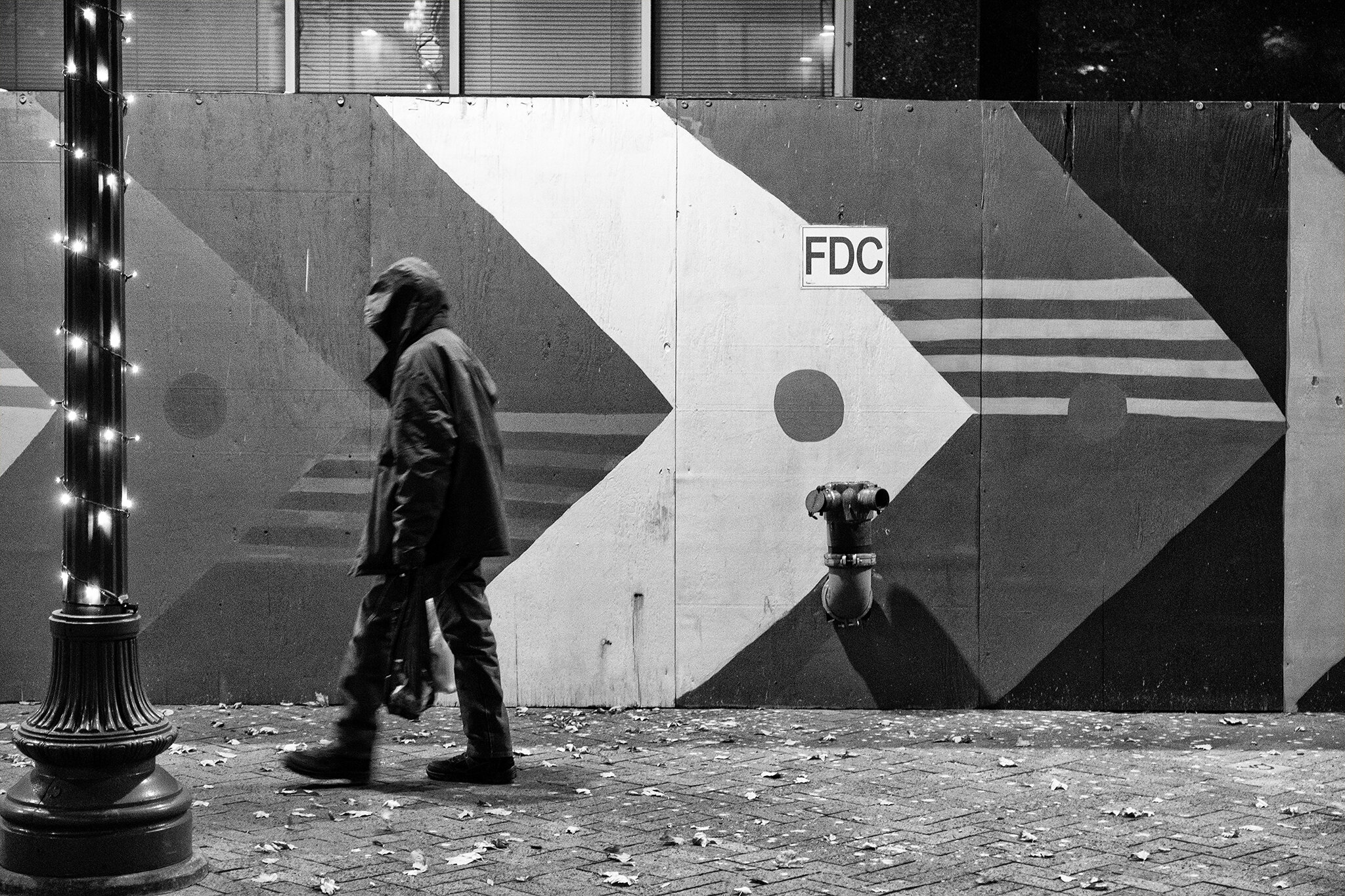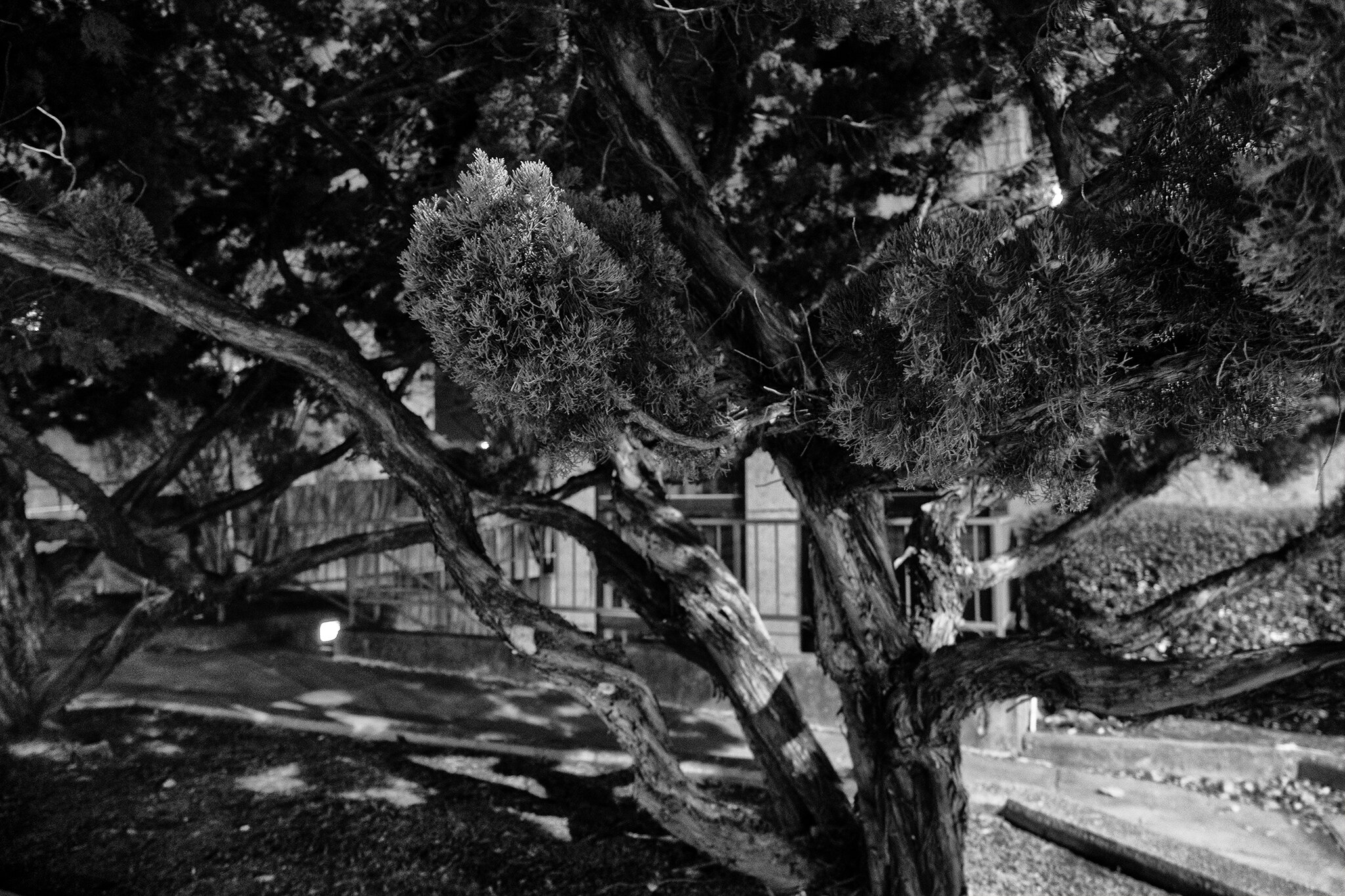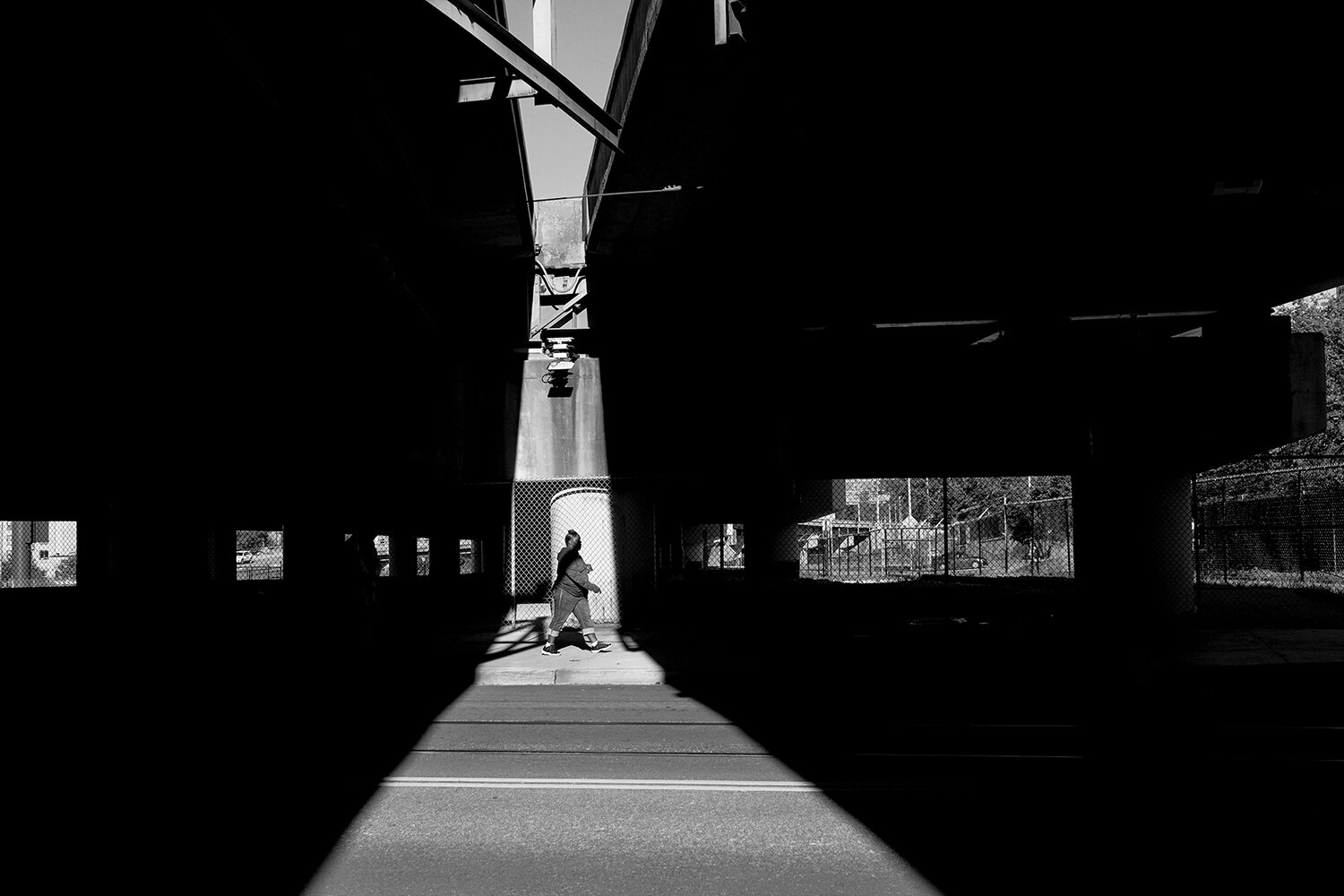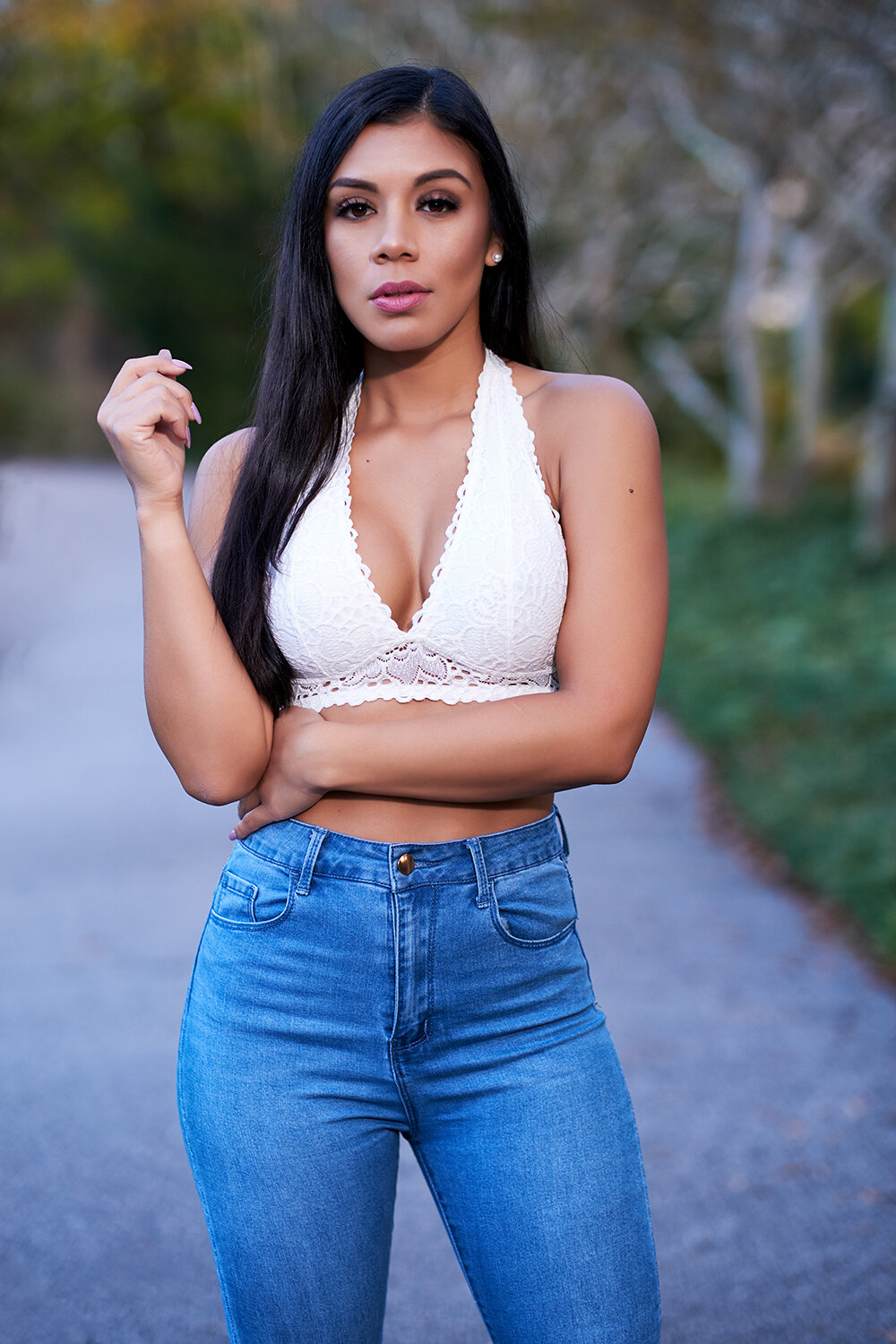I attended a virtual workshop hosted by Photographer @ibarionex in December 2020, it was excellent. Takeaways from the workshop: always be proactive, always be ready to photograph an engaging moment and carry your camera everywhere. Participants were challenged to take 36 photos. All shots taken with @fujifilmx_us X-T3 with the XF 16-55mm f/2.8 lens. The workshop brought back a lot of memories about the #Project365 that I did several years ago. The challenge to take 36 photos as if I had one single roll of film was just what I needed at that moment. It had been months since I had used my camera. COVID has caused me to cease my portrait photography work due to the desire to want to stay safe and protect my family from unnecessary exposure to risk. I jumped at the opportunity to use my camera that has been sitting in my camera bag for months due to my desire to exercise extreme caution since the outbreak of COVID. It felt like I was coming home when I was out on the streets of Memphis, TN looking for an interesting image. It was great to get out and shoot some night street photography, but it was even greater to be on the hunt for an interesting photograph, to be using my camera again made me remember why I love photography and how therapeutic photography can be for me.
My Journey to the Fujifilm System
Fujifilm X-T3, Fujifilm XF 16-55mm f/2.8 lens, f/7.1, 1/800 sec and ISO 160
My name is Eric H. Adeleye. I reside in Tennessee but I am originally from Pennsylvania, United States. I often like to think of myself as a photographer who happens to have a day job. During the day I work as an Information Technology professional, focused mainly on the areas of helpdesk support, computer administration, server administration, and network support for my customers. When I am not at my daytime profession, I am working on photography. My story grew into something positive following discouragement I received as a child. At the age of 12, my junior high-school was looking for a cartoonist for the school newspaper. I gathered together my artwork to show the teacher the type of things I drew. The teacher that was in charge of recruiting a student for the newspaper scolded me and verbally ridiculed my artwork saying it was “too ghetto”. I felt so bad from the harsh feedback I received after trying out for the school newspaper that I quit drawing that day.
Fujifilm X-T3, Fujifilm XF 16-55mm f/2.8 lens, f/7.1, 1/250 sec and ISO 640
Fujifilm X-T3, Fujifilm XF 16-55mm f/2.8 lens, f/6.4, 1/250 sec and ISO 160
Later while in high school, at age 17, I decided to volunteer to work with the yearbook committee taking photographs. I purchased my first 35mm film camera which began my love affair with photography. Through the years I enjoyed photography as an avid hobbyist where I took photographs of family members, nature, and occasionally photographed weddings or events for friends. After photographing a friend’s wedding in 2010, I decided to pursue photography professionally. As a professional photographer, what I’ve found as one of the most beneficial acts is undertaking personal projects. Completing the Project 365 was very crucial in helping me develop into the photographer that I am today. During my Project 365, from September 2011 to September 2012, I took the time to experiment in new and exciting ways of photography. By the conclusion of the project, I had learned a tremendous amount about myself as an artist and about the genres of photography in which I wanted to focus. I concluded that I wanted to focus specifically on 1) portraiture, 2) landscape, and 3) street photography. Of the three genres, portraiture is by far my favorite and the one that dominates my portfolio of work. I am truly fascinated with the beauty and power of an individual portrait of a person, and the story that can be conveyed through a photograph. Landscapes have always fascinated me because of the beauty of the world and nature around me. I’ve always admired nature which led me to develop an affinity towards photographing landscapes in urban and scenic environments.
Fujifilm X-T3, Fujifilm XF 16-55mm f/2.8, f/9, 1/1000 sec and ISO 200
Fujifilm X-T3, Fujifilm XF 16-55mm f/2.8 lens, f/5.6, 1/2000 sec and ISO 640
Street photography represents a mixture of portraiture and documentation of the human conditions within a community. It is so important for a photographer to discover and focus on the genres that they love. I have met photographers who attempt to focus on everything and eventually burn out or become frustrated at their pace of development as an artist. It wasn’t until I completed my Project 365 where I truly began to comprehend the importance of focusing on specific genres of photography. Shooting content because it was something I liked didn’t feed my passion to develop as an artist within the craft of photography, it took lots of practice and time to discover what I truly loved versus liked about different photography genres. Once I identified the areas I wanted to focus on, I began to practice and consume any information and training about photography that I could obtain. My thirst for knowledge and experience about photography led me to begin more personal projects after the Project 365, study the work of contemporary photographers that I admired like Joe McNally, Joel Grimes, Scott Kelby, Peter Hurley, Zack Arias, and Matthew Jordan Smith. I started investing in books to add to my photography library. I purchased video tutorials from CreativeLive, RGG EDU, Phlearn, and other digital content sources. I began to seek out photographers in my area as well as through social media with whom to network. I attended photography workshops to cultivate hands on experience and learn directly from other photographers. Volunteering my photography services to military families through the Heart Apart organization helped me stay focused on the importance of capturing moments in time. Although I have been around cameras since the age of 17, now 48 years old, it has taken me years to develop my knowledge as an artist and get to the point where I can consistently produce high quality work for my clients. Working as a photographer for clients is an experience that I do not take for granted, it is a humbling responsibility to be entrusted to photograph and preserve a moment in individuals time and life. This is why I would advise anyone who wakes up Christmas day to a new camera, to not rush into taking on assignments or clients. It’s important to know that clients don’t pay a photographer to experiment on them as they (the photographer) attempts to learn or perfect a technique; clients hire a photographer for consistency in their ability and style to capture a photograph. How can a person know what their style and vision is for photography if they don’t take the time to learn and discover it?
Fujifilm X-T3, Fujifilm XF 16-55mm f/2.8, f/11, 1/250 sec and ISO 160
Up until 2018, my primary setup was built around the Nikon D810 camera. After the point and shoot Olympus 35mm camera that I used in high school, I graduated to the Ricoh KR-5 Super II 35mm camera which I still have to this day. Around the 2002, I decided to upgrade to a Nikon N75. In 2010 when I decided to get a digital camera, I purchased a Nikon D200. From the Nikon D200, I eventually moved to the Nikon D800 and D810 cameras. After purchasing the Nikon D810, my D800 became my backup camera body which I traded in for a Sony A7II. The Sony A7II was a good camera but didn’t impress me, so I eventually got rid of the camera because it wasn’t a good fit for me. By 2018, I had begun to contemplate the next camera that I wanted to buy. After doing an extensive amount of research and speaking with photography colleagues whom I trusted who utilized Fujifilm cameras, I decided to buy the Fujifilm X-T3 in October 2018 with the 56mm f/1.2 and 16-55mm f/2.8 lenses. Some of the reasons that led me to buy the Fujifilm X-T3 was the amazing work that I saw my peers produce with Fujifilm cameras. It is good to read about reviews about camera, but sitting down and being able to talk with users about their experiences with Fujifilm cameras cemented my desires to try out the Fujifilm system. I was impressed by how Fujifilm treated their customers and the cameras they produced through outstanding firmware support. As a professional in the Information Technology field, I could truly appreciate the significance of supporting hardware with excellent firmware that didn’t just fix problems but added new features and improvements to a camera over the course of its lifetime. Another reason I selected Fujifilm was for my long-range goal of working with medium format. I wanted my next camera system to be from one camera manufacture. During the past 8 months, the Fujifilm X-T3 has become my primary camera body for all of my work, the Nikon D810 is now my backup camera.
Fujifilm X-T3, Fujifilm XF 56mm f/1.2 lens, f/1.8, 1/250 sec and ISO 200
Fujifilm X-T3, Fujifilm XF 56mm f/1.2 lens, f/1.8, 1/250 sec and ISO 200
There are numerous advantages and disadvantages to using a mirrorless camera system as opposed to a full frame DSLR.
Some advantages of mirrorless cameras are:
· Live exposure preview of an image before you take the photograph. This allows you to adjust your exposure in real time before you take a picture in order to get the correctly exposed photograph.
· Most mirrorless cameras can be adapted to work with legacy lenses as well as lenses from other manufactures.
· Technological aids within mirrorless cameras like eye and face detection increases the ability to take a photograph of a person and have the eyes in focus. In portraiture it is paramount to capture the eyes of your subject in focus. Out of focus eyes or a blurry face can make a portrait unusable.
· Mirrorless cameras serve a dual ability to take excellent video
Some disadvantages of mirrorless cameras are:
· Becoming overly reliant on the camera doing the work for you. Not taking the time to learn some of the fundamentals of photography that you have to master with 35mm film like the exposure triangle, rules about composition, and making sure every shot counted.
· With the advancements in face and eye detection, photographer does not have to develop the technique of focusing and recomposing a shot to frame a subject properly.
Fujifilm X-T3, Fujifilm XF 56mm f/1.2 lens, f/1.8, 1/250 sec and ISO 200
Fujifilm X-T3, Fujifilm XF 56mm f/1.2 lens, f/2.8, 1/250 sec and ISO 1600
Fujifilm X-T3, Fujifilm XF 56mm f/1.2 lens, f/1.8, 1/250 sec and ISO 200
The crop sensor cameras of today can compete very well with full frame DSLR and mirrorless camera. I no longer get caught up or bothered by using a crop sensor camera over a full frame sensor camera. If a photographer takes a photograph, it is impossible to discern the type of camera that is used in most cases unless you can view the EXIF information about the image. Other photographers care about the type of camera you use, clients are more concerned about the consistent results that you can produce with the gears and tools at you employ to capture an image.
At the moment the flash system that I use for most of my work is built around the Godox AD200. I also have two Alien Bee B800 strobes in the event that I need to use multiple lights. I have worked with other strobe systems like the Profoto B1, B2, and B10 as well. I use the following light modifiers: Westcott Rapid Box 48” Octa XXL, a 7” Reflector, the Cheetah Snub 38 Reflector, the Westcott 7’ Umbrella, a 60” Umbrella, 28” Umbrella, and Cheetah strip softbox. I have various trigger systems for backup purposes to include the Flashpoint R2 Pro Mark II for Fujifilm, the Flashpoint R2 Pro for Nikon, four PocketWizard Plus III Transceivers, and various Yongnuo triggers. I always shoot with off camera flash or strobes when working in the studio or outdoor with clients, I almost never shoot with natural light when doing portraiture. The only time I use natural light is when I am doing street photography.
Fujifilm X-T3, Fujifilm XF 56mm f/1.2 lens, f/8, 1/200 sec and ISO 160
Fujifilm X-T3, Fujifilm XF 56mm f/1.2 lens, f/6.4, 1/125 sec and ISO 160
Posting processing work is done with Capture One Pro 11, Adobe Bridge CC, and Adobe Photoshop CC. I do not use Lightroom at all. I truly like the way that Capture One Pro 11 renders Fujifilm Raw files. The first thing that I do after a shoot is download my images from the SD cards to my external hard drive. Next, I separate the images according to file type, I always shoot in Raw + JPEG. Shooting in Raw+ JPEG is beneficial because you have a duplicate backup of an image. Back when I had the Nikon D800, I experienced a unique intermittent problem when shooting. The Nikon D800 Raw file would randomly get corrupted with rainbow streaks within the image but the identical JPEG file would be fine. Since the emergence of the random Raw file problem with the D800, I have shot with both Raw + JPEG file formats enabled ever since. Plus, if you are creating a contact sheet for your clients, if you already have the JPEG files straight out of the camera, you can save time from not having to convert the Raw files to JPEG files to create a contact sheet. Next, I will rename the files according to the file organization system that I employ. Then I will import the photo shoot into Capture One Pro 11 to perform initial adjustments of the photographs as needed and export them into Adobe Photoshop CC for retouching and processing.
I am patiently awaiting the announcement of the Fujifilm X-H2 as that is the next camera that I plan to purchase from Fujifilm. I am also considering getting a second Fujifilm X-T3 for video work that I want to produce. The Fujifilm X-T3 has invigorated my desires to continue to grow as a photographer and create art. The ergonomics and ease of the control system allow me to focus more on capture photographs as the tool disappears within my workflow capturing an image. I look forward to the future using Fujifilm X-T3 as my primary camera system.
Photo credits: Models @amanda_nitza and @aieshia_dickey_photos.
Fujifilm X-T3, Fujifilm XF 56mm f/1.2 lens, f/8, 1/200 sec and ISO 160
Fujifilm X-T3, Fujifilm XF 16-55mm f/2.8 lens, f/7.1, 1/1000 sec and ISO 160
© 2020 Eric H. Adeleye, All Rights Reserved


























